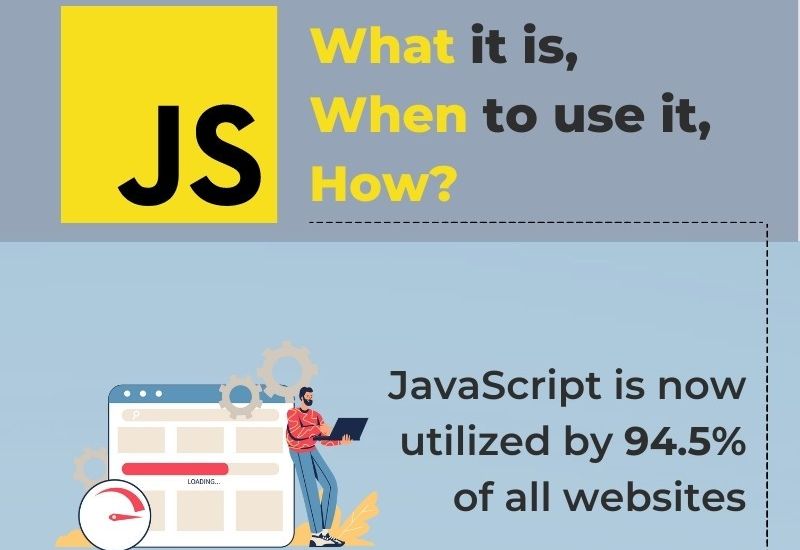
Why Are there so many different Ways to Write Code? – The Role of JavaScript
When it comes to programming languages used in writing code, there’s no shortage of options, with popular programming names like Python, JavaScript, Java, C, C++, PHP, and a host of others available.
New programmers in the industry usually wonder why there are so many programming languages, and developers and observers ask why one programming language seems like the popular choice for new and expert front-end and back-end developers.
If you’re already familiar with programming languages, I bet you know the answer to those questions. But if you haven’t figured it out by now, I’m referring to JavaScript.
So, what makes JavaScript so popular, and how did it become so big among developers?
Brief History of Programming and JavaScript
JavaScript as a programming language has existed for over 20 years. Since its Netscape creator, Brendan Eich, created the coding language in 1995, it has become more than another language to translate 1’s and 0’s into readable language into a core technology driving the world wide web.
Before Netscape developed JavaScript, Mosaic introduced the first web browser with a graphical user interface in 1993. Mosaic’s lead developers founded Netscape and created the more efficient browser called Netscape Navigator in 1994.
The early years of web pages were only static and had no capability for interactivity. As a result, web page interaction during this period was limited, leading Netscape to add a scripting language to the Navigator browser.
This development map is essential because Brenden Eich developed what we now know as JavaScript. He created the new scripting language in just ten days.
New programming languages will be developed as technology evolves to address specific problems the current languages aren’t capable of.
However, JavaScript may be here to stay as it’s deeply embedded in most of our technology because of the uniqueness of the language.
So, What is JavaScript?
If your webpage can perform specific complex interactions, like animated graphics, content updates, or interactive maps, there’s a high chance it’s built on JavaScript.
More technically, JavaScript is a programming language that allows developers to create more dynamic interactions in the web pages, applications, games, and servers they develop.
Generally, developers combine CSS and HTML alongside JavaScript. But JavaScript can maintain user interaction by itself.
Why is JavaScript so Popular?
We are more dependent on JavaScript’s interactivity than you may know. The programming language is deeply embedded in most of the software we use daily. It is virtually all over the internet.
Statistically, there are about 1.8 billion websites worldwide, and 95% of them are built with JavaScript.
The programming language is used by over 64.9% of developers, making it the most widely used programming language.
To further understand its relevance, disabling JavaScript on your browser for just a day will reduce the functionality of parts of your web pages, including YouTube, Google Maps, and even Netflix.
JavaScript is plugged into your Mac, Windows, Smart TVs, games, and even your phones.
But JavaScript wasn’t always the ‘backbone’ of technological software.
JavaScript had a bad outing in its early days until the creation of Node.js in 2009, sparking an increase in the usage of JavaScript outside web browsers. Further development of JavaScript produced ECMAScript in 2015, further increasing its usability.
How Does JavaScript Work?
JavaScript is a client-side scripting language. Basically, a client-side scripting language means that it runs inside the web browser on the client machine and cannot function on an external device.
Since most modern-day browsers have JavaScript installed, it makes the program more user-friendly.
Advantages of JavaScript over other Programming Languages
Since its release, JavaScript has surpassed other languages because of several reasons, some of which include the following:
- Accessibility: In everyday web tools and companies, JavaScript is almost everywhere on the internet.
- Easy understanding: JavaScript is to understand for both users and developers. It is also easy to implement and saves cost development.
- Interoperability: JavaScript works well with other programming languages. Thus, more developers prefer using it to develop several applications.
- Speed: Since JavaScript is a client-side script, the speed of connecting to the server saves time.
- Versatility: With JavaScript, you can develop the front-end or back-end.
Conclusion: The Role of other Languages in Programming
Although JavaScript is a favorite among developers, given the data, it doesn’t trump the importance of different programming languages.
All programming languages serve the same purpose of translating human ideas into languages the computer understands.
As I said earlier, technological advancements instigate the creation of new tools to match them. Thus, we need suitable programming languages to develop matching software as technology advances.
With JavaScript, we may have a core. But besides other programming languages used to match technology, they serve as a variety for developers and are critical to expanding the solutions developers can build.




